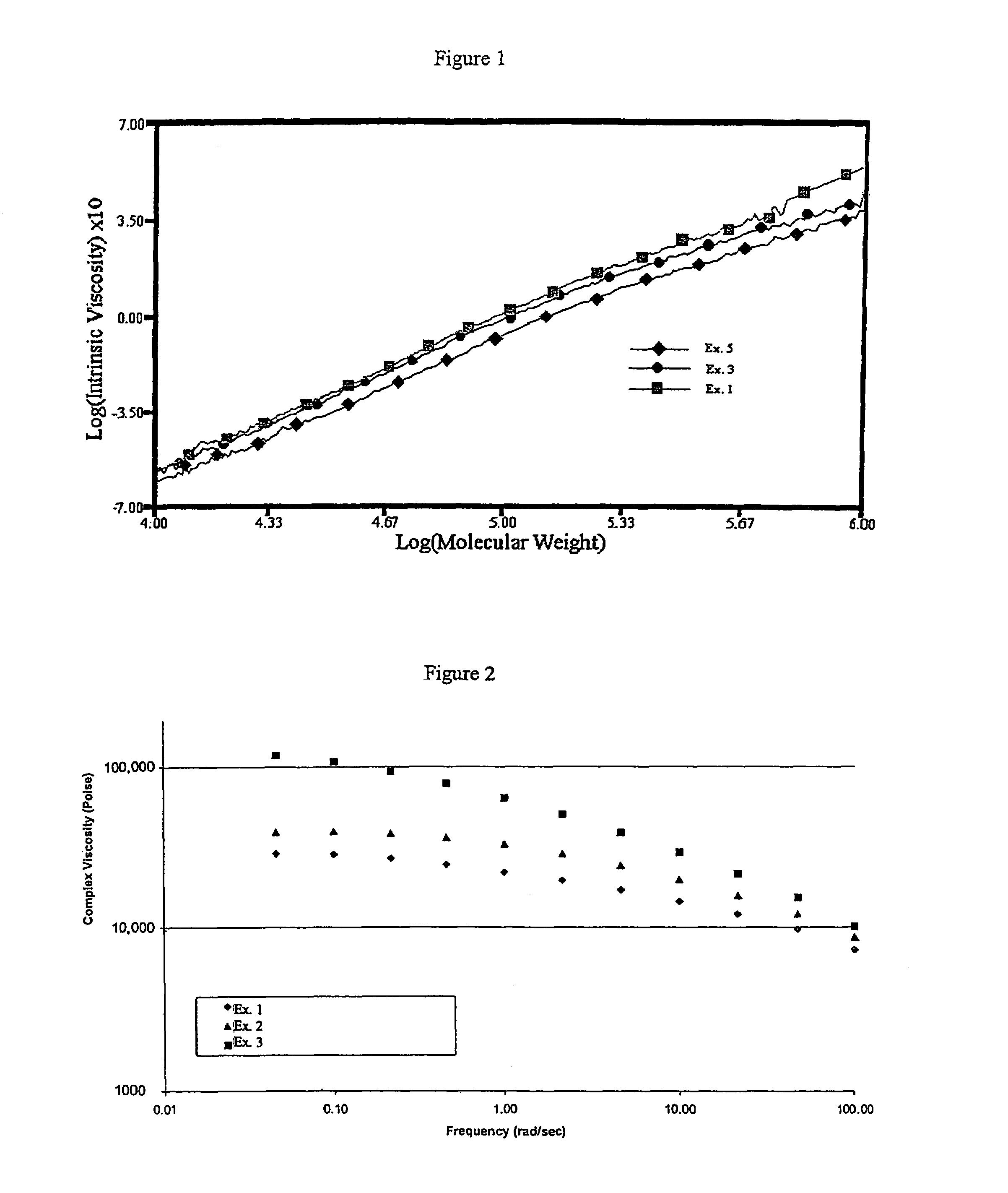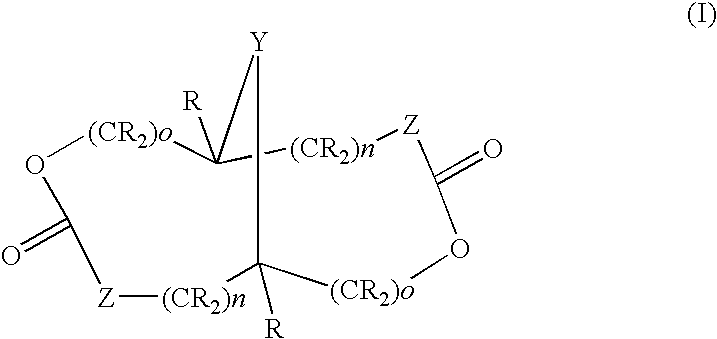Copolymers of monocyclic esters and carbonates and methods for making same
a monocyclic ester and copolymer technology, applied in the field of polymers and/or carbonates, can solve the problems of poor rheological properties, difficult processing in certain applications, limited applications for which these polymers can be used, etc., and achieve excellent control of rheological properties and minimal gelling
- Summary
- Abstract
- Description
- Claims
- Application Information
AI Technical Summary
Benefits of technology
Problems solved by technology
Method used
Image
Examples
examples 1 – 5
EXAMPLES 1–5
A. Preparation of 2,5-dioxa-bicyclo[2,2,2]octane-3,6-dione (Bicyclic Diester)
[0045]Freshly distilled adipic acid dichloride (100.65 parts) is loaded into a 3-necked flask equipped with a reflux condenser, dropping funnel and stirrer. The adipic acid dichloride is heated to 100° C., and 193.6 parts bromine (Br2) is added over about 48 hours with stirring. Volatiles are removed by applying vacuum (20 Torr, 0.5 hour) to yield 187 parts of a mixture of meso and d,l-forms of α,α′-dibromoadipic acid dichloride.
[0046]The α,α′-dibromoadipic acid dichloride is added slowly with vigorous stirring to 1750 parts ground ice, so that an emulsion of highly-dispersed oil droplets in water is formed. Stirring is continued for about 10 hours, during which time the oil droplets form into soft pieces and then into a hard powder. The emulsion is then filtered, washed with water and dried in open air. One hundred fifteen parts of a mixture of meso and d,l-forms (˜2.0 ratio) of α,α′-dibromoadi...
PUM
| Property | Measurement | Unit |
|---|---|---|
| melt tension | aaaaa | aaaaa |
| melt flow rate | aaaaa | aaaaa |
| weight | aaaaa | aaaaa |
Abstract
Description
Claims
Application Information
 Login to View More
Login to View More - R&D
- Intellectual Property
- Life Sciences
- Materials
- Tech Scout
- Unparalleled Data Quality
- Higher Quality Content
- 60% Fewer Hallucinations
Browse by: Latest US Patents, China's latest patents, Technical Efficacy Thesaurus, Application Domain, Technology Topic, Popular Technical Reports.
© 2025 PatSnap. All rights reserved.Legal|Privacy policy|Modern Slavery Act Transparency Statement|Sitemap|About US| Contact US: help@patsnap.com



